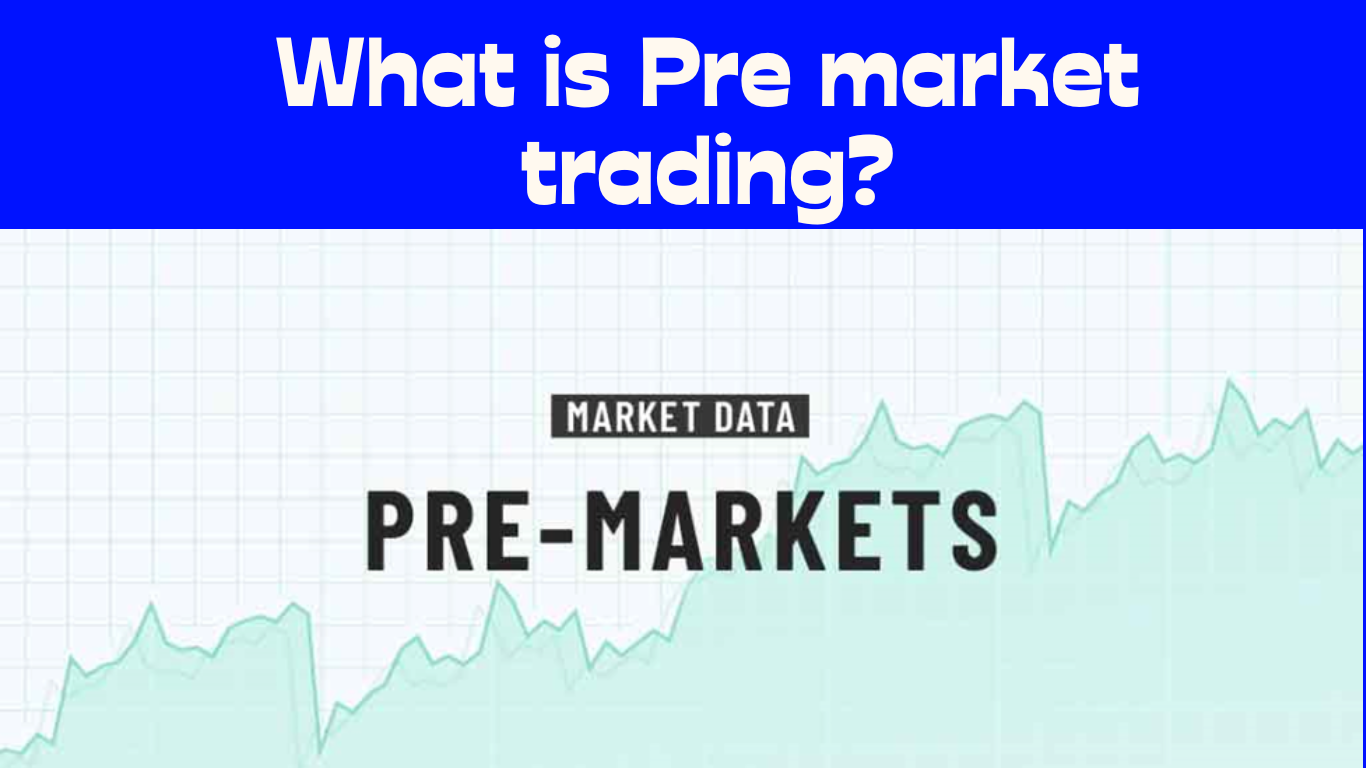What is Pre market trading?

Premarket trading is a trading that occurs on exchanges before the regular market trading hours begin. The pre market stock trading takes place between the hours of 8:00 AM and 9:30 AM. The volumes traded in premarket sessions are usually much lower as compared to regular trading hours. Due to very few participants active before the market hours i.e. 9:30 AM, investors find it difficult to execute transactions.
In premarket sessions, investors have less liquidity i.e. converting stocks into cash therefore, the prices may not adjust as quickly as they do in the regular market session.
Understanding Pre-Market
Pre-market trading activity generally has limited volume and liquidity; therefore, large bid-ask spreads are common. Many retail brokers offer pre-market trading but may limit the types of orders that can be used during the pre-market period. Several direct-access brokers allow access to pre-market trading to commence as early at 4:00 a.m. EST from Monday through Friday.
It is important to remember there is very little activity for most stocks so early in the morning, unless there is news. The liquidity is also extremely thin, with most stocks only showing stub quotes. Index-based exchange-traded-funds (ETF), such as the SPDR S&P 500 ETF, have moving quotes due to the trading in the S&P 500 futures contracts. Many of the most widely held top holdings in benchmark indices may also get movement in the event of a significant gap up or down in the S&P 500 futures. Stocks such as Apple Inc. tend to get trades as early at 4:00 a.m. EST.1
After-hours trading was introduced before pre-market trading. The New York Stock Exchange introduced after-hours trading in June 1991 by extending trading hours by an hour.2
The move was a response to increased competition from international exchanges in London and Tokyo and private exchanges, which offered more hours of trading. 2.24 million shares changed hands in two sessions of trading. Over the years, as exchanges became increasingly computerized and the Internet’s reach spread across borders, NYSE began extending the number of hours of trading available for trading, eventually allowing pre-market trading between the hours of 4 a.m. and 9:30 a.m.
Premarket trading background
Pre-market trades are executed on computer-based systems including alternative trading systems and electronic communications networks. Premarket trading is used by traders for various reasons like:
- To see where the market and individual securities are headed when regular trading starts.
- To try to get ahead of market reactions to breaking news like overseas events, political instability, and other factors that can affect markets or individual securities.
- If a corporation releases an earnings announcement after the market closes and it could cause the stock to rise or fall the next trading day, then the premarket trader can attempt to buy or sell early before the regular market session.
What is pre open market?
The pre open market sessions are from 9:00 AM to 9:15 AM for both the National Stock Exchange (NSE) and Bombay Stock Exchange (BSE). Pre open market is basically the period of trading activity which takes place just before the regular stock market session.
How premarket trading works?
Trading in extended sessions happens electronically i.e. through Electronic Communication Network (ECNs). When buy order is placed at a predetermined rate, ECNs keeps a track and the moment there is any matching sell order it acts as a matchmaker bringing them close to each other hence, completely makes the broker null and void. In premarket trading sessions, the liquidity levels are quite tight and the trade is rather volatile.
Before proceeding, let us learn a few basic terms i.e. type of orders that are placed in market:
- Market Orders: When the price of the order is not specified during buying or selling, such orders are executed as per the availing market rates.
- Limit Orders: When the price and quantity of orders are specified for buying and selling, these are executed once the matching orders are found.
The 15-minute session consists of mainly 3 slots:
- 9:00 AM – 9:08 AM: It is known as the order collection period. During this period, the orders can be modified or canceled.
- 9:08 AM -9:12 AM: It is known as order matching period and trade confirmation period. In this period placed orders are confirmed based on the price identification method referred to as “Equilibrium price determination” or “Call auction”. During this period modification or cancellation of placed order cannot be done.
- 9:12 AM – 9:15 AM: It is known as a buffer period and it facilitates the transition from pre open market to normal market session.
Pre-Market Trading
Since the market is so thin before 8 a.m. EST, there is very little benefit to trading so early. In fact, it can be quite risky due to the possible slippage from exceptionally wide bid-ask spreads. Most brokers begin pre-market access at 8:00 a.m. EST. This is when the volume picks up simultaneously across the board, especially for stocks indicating a gap higher or lower based on news or rumors. The pre-market indications for a stock can be especially tricky for traders and should only be interpreted lightly. Stocks can appear strong pre-market, only to reverse direction at the normal market open at 9:30 a.m. EST. Only the most experienced traders should ever consider trading in the pre-market.
One advantage of pre-market trading is the ability to get an early jump on reactions to news releases. However, the limited amount of volume can give the perception of strength or weakness that can be deceptive and false when the market opens as real volume comes into play. Pre-market trading can only be executed with limit orders through electronic communication networks (ECNs), such as Archipelago (ARCA), Instinet (INCA), Island (ISLD) and Bloomberg Trade Book (BTRD). Market makers are not permitted to execute orders until the 9:30 a.m. EST. opening bell.
